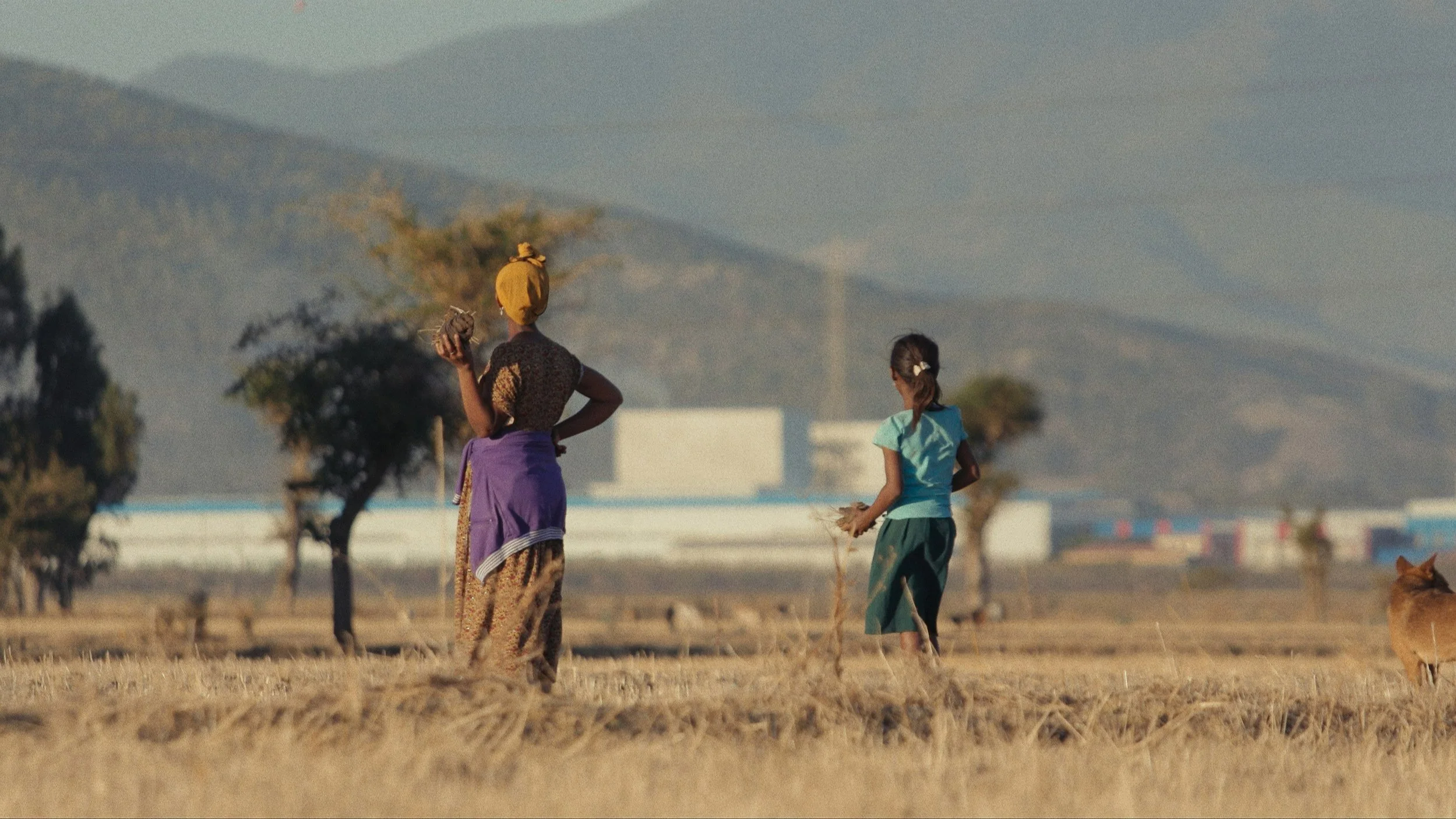Made in Ethiopia
Xinyan Yu and Max Duncan’s insightful documentary explores the all-round impact on Ethiopia caused by Chinese business ventures.
Image courtesy of Dogwoof Releasing.
As their titles do indeed indicate, this film by Xinyan Yu and Max Duncan and 2019's American Factory feature locations that are continents apart. But, despite that and the differences that flow from it, these two documentaries share much common ground. That is because central to each of them is the theme of Chinese business expansion abroad and the impact which this has on the communities concerned. Whatever the country involved, those living there will find that large numbers of them are working for Chinese bosses whose operations echo the way that things are done in China. In that country employees of big companies have come to accept the indoctrination whereby the company is to be seen as more important than family life. That's a viewpoint that leads to company profits outweighing any concern for the quality of life of employees who are expected to meet targets and to work overtime and the outlook of the Chinese bosses abroad is much the same whether the site they control is in America or in Ethiopia.
Nevertheless, other key issues arise from the particular location. In American Factory the focus was on a building taken over by a Chinese billionaire but previously run by General Motors and its reopening was welcomed due to the fact that so many inhabitants of Dayton, Ohio were reliant on the factory as their place of work. In contrast, the business featured in Made in Ethiopia is the Eastern Industrial Zone which exists around the small town of Dukem and it's a large-scale development. By 2019, the year when the shooting of this documentary started, the EIZ had over a hundred companies employing three thousand people in each one. This was seen as a win-win situation in that, while it was just what the Chinese wanted, it was also seen as a vital boost to Ethiopia’s employment rate and to its economic prosperity. But, even as the film shows that, it also reveals all too clearly who the losers were (and are). They include not only the workers like Beti who came to find her job unpleasant on account of the pressures involved and ultimately moved out but also landowners in the area. Because of the scale of the development planned, EIZ was intent on pushing forward with Phase 2 which led to farmers being forced to sell up with the promise of agreed compensation including replacement land which in the event would never materialise (as time passed even Covid would be used as an excuse with the claim that all cash was earmarked for dealing with the consequences of the pandemic). In particular, the film illustrates this by instancing the plight of Workinesh Chala who was bringing up six children on the farm that she ran with her husband whose heavy drinking only added to her problems.
If Beti and Workinesh are strongly featured here, so too is Motto who is the deputy director of EIZ. She emerges as a strong woman ready to push the propaganda and regularly stressing how beneficial EIZ is for the people of Ethiopia. Nevertheless, the film makes us recognise her efficiency and the cost to her of doing this work which keeps her so far away from her young daughter who remains in China. Indeed, she may well believe what she says and the film gains by not simply seeking to portray her as the villainess of the piece.
Made in Ethiopia is well edited and very well photographed and the first half provides a very effective overall view of events by cutting back-and-forth between the experiences of Beti, Workinesh and Motto. It also moves at a good pace although that does have the paradoxical result of making one feel that because one has got through so much material the film is longer than it is. There is also a slight falling away in the second half because as time went by not only did the Covid crisis arise (which we readily understand and which again illustrates the demands made by EIZ on the employees) but civil war broke out too. In seeking to give a wider picture of events, the film touches on the violent conflict but for those unfamiliar with this history rather more explanations would have been useful (as when a sudden reference to the rebels left me wondering just who they were). However, it is made clear that these tensions put off investors and limited output in factories so the war’s relevance in this context is clear. Similarly, as part of the broader portrait the film touches on the religious beliefs of the Ethiopians without providing any detailed context although when we see village folks praying to Abdari it does become apparent that a sacred tree which is central to this is likely to be cut down as part of EIZ’s development plan. Elsewhere the film touches on women's rights in Ethiopia and the footage featuring Workinesh and her daughter Rehoboth does bring out the control exercised by men while also suggesting that the women can be more practical and far-seeing them the males. The first half of Made in Ethiopia is somewhat more effective than the second and American Factory was more consistent in that respect but a lot of good work has gone into this film and it is certainly worthwhile.
MANSEL STIMPSON
Featuring Betelihem ‘Beti’ Ashenafi, Motto Ma, Workinesh Chala.
Dir Xinyan Yu and Max Duncan, Pro Tamara Dewit, Xinyan Yu and Max Duncan, Screenplay Xinyan Yu and Max Duncan, Ph Max Duncan, Ed Biel Andrés, Jeppe Bødskov and Slyl Chen, Music Ali Heinwein.
Hard Truth Films/Dogwoof/Gobez Media-Dogwoof Releasing.
91 mins. USA/Denmark/Canada/UK/South Korea. 2024. UK Rel: 29 November 2024. No Cert.


